
My Way: Violin Construction From Start to Finish
PART X: THE SOUL OF A VIOLIN
After the bridge has been fitted for correct height and ease of fingering, after the nut has been adjusted, the fingerboard and neck polished, after the pegs have been fitted and the strings installed - then the sound post is placed inside the instrument. One poetic writer from my youthful reading termed the sound post the "soul" of the violin. And it certainly is. Without this spruce stick which miraculously co-ordinates all the vibrating parts of a violin, the violin would sound no better than a gourd with a piece of rawhide stretched over it. Forever unnamed, unknown and relegated to the dark matter chapters of history is the genius who placed the first sound post and transformed our beloved instrument from a toad into a prince.
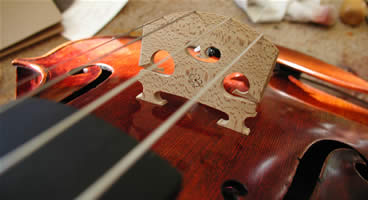
The fitted bridge in place. The tension on the strings will be kept loose until the final step: positioning the sound post.
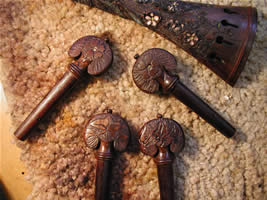
Hand carved peg and tailpiece being assembled for "stringing up" the viola.
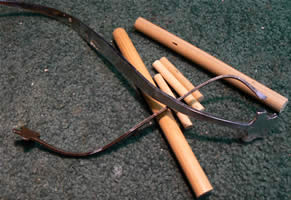
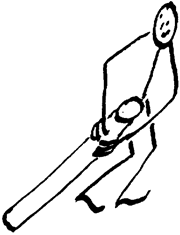
These are a few assorted sound posts for violins, violas and cellos along with the setters which are used in placing the sound post inside the instrument.
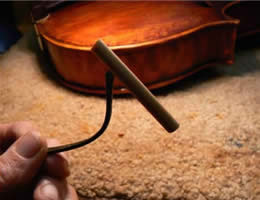

The violin would have a small and puny tone without its sound post: a little stick of spruce which some unknown genius first placed inside a violin wedging it gently between the top and back. It looks like an old fashioned child’s tinker toy and is positioned behind the bridge foot and opposite the bass bar. When properly inserted, touching a magical “sweet spot,” the violin blooms with sound.
